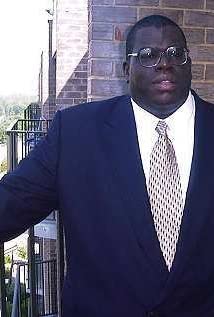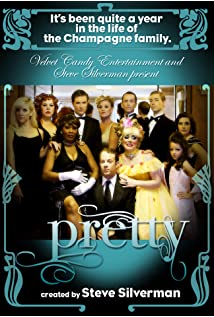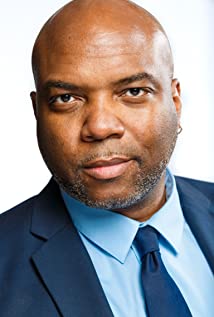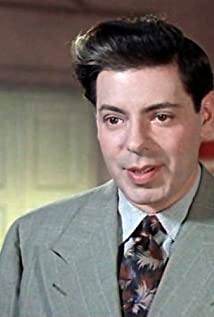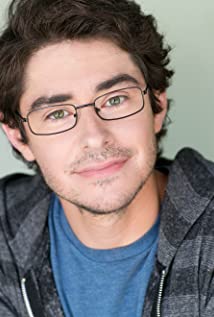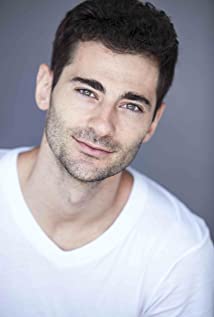Harry Davenport was born on January 19, 1866 in New York City, New York, United States, is Actor, Director, Soundtrack. Character fame on film came quite late for long-time stage actor Harry Davenport at age 70, but he made up for lost time in very quick fashion with well over a hundred film roles registered from the advent of sound to the time of his death in 1949. Beloved for his twinkle-eyed avuncular and/or grandfatherly types in both comedy and drama, Davenport also represented a commanding yet comforting wisdom in his more authoritative roles as judge, doctor, minister, senator, etc.The scion of an acting dynasty, he was born Harold George Bryant Davenport on January 19, 1866, in New York City to actors Edward Loomis Davenport (1815-1877) and Fanny (Elizabeth) Vining (1829-1891). One of nine children, two of his siblings died young while the seven surviving children went on to share their parents' love of the arts, including actress Fanny (1850-1898) and opera singer Lillie Davenport (1851-1927). Harry took his first stage bow in an 1871 production of "Damon and Pythias" in Philadelphia, and by his teen years was playing Shakespeare in stock companies.Re-settling in New York, Harry began assertively building up his theater credits. In 1893, at age 27, he married actress Alice Shepard (aka Alice Davenport). Their brief marriage of three years produced daughter Dorothy Davenport, who would continue the acting dynasty into a new generation. She earned further recognition as the wife of tragic silent screen star Wallace Reid. Shortly after his divorce from Alice was final in early 1896, Harry married musical comedy star Phyllis Rankin (1875-1934). Their children Kate Davenport, Edward Davenport and Fanny Davenport became actors as well.Making his Broadway debut with the musical comedy "The Voyage of Suzette" in 1894, Harry continued in the musical vein with Broadway productions of "The Belle of New York" (1897) (with wife Phyllis) (1895), "In Gay Paree" (1899) and "The Rounders" (1899) (again with Phyllis). The new century ushered in more musicals with "The Girl from Up There" (1901), "The Defender" (1901), "The Girl from Kay's" (1903), "It Happened in Nordland" (1904), "My Best Girl" (1912), "Sari" (1914) and "The Dancing Duchess" (1914). On the legit side he played expertly in "A Country Mouse" (opposite Ethel Barrymore), and in "The Next of Kin" (1909) and "Children of Destiny" (1910).Co-founding the Actor's Equity Association along with vaudeville legend Eddie Foy as a means to confront the deplorable exploitation of actors, Harry was held in high regard as the acting community subsequently came together and executed strikes to protect and guarantee their rights. This dire situation also prompted Harry to seek work elsewhere -- in films. He joined up with Vitragraph in 1914 and made his silent screen debut with the film Too Many Husbands (1914). In the next year he starred in and directed a series of "Jarr Family" shorts, and made his last silent feature with an unbilled part in Among Those Present (1921) before refocusing completely on his first love -- the stage.He and his actress/wife Phyllis joined forces once again with the Broadway hit comedies "Lightnin'" and "Three Wise Fools", both in 1918. Throughout the 1920s decade he continued to find employment on the stage with "Thank You," Cock O' the Roost, "Hay Fever" and "Julius Caesar". The untimely death of wife Phyllis in 1934 prompted Harry to abandon his stage pursuits and travel to California, at age 69, to again check out the film industry. It proved to be a very smart move.Harry graced a number of Oscar-caliber films during his character reign: The Life of Emile Zola (1937), You Can't Take It with You (1938), The Hunchback of Notre Dame (1939), Gone with the Wind (1939), All This, and Heaven Too (1940), Foreign Correspondent (1940), One Foot in Heaven (1941), Kings Row (1942) and The Ox-Bow Incident (1943). Several of his films also featured family or extended family members. His brother-in-law Lionel Barrymore appeared in a number of Harry's films and Gone with the Wind (1939) also had a son and grandson in the cast.Harry maintained his film career right up until his death at age 83 of a heart attack on August 9, 1949, and was buried back in New York (Valhalla).
Harry Davenport is a member of Actor
Does Harry Davenport Dead or Alive?
As per our current Database, Harry Davenport has been died on August 9, 1949(1949-08-09) (aged 83)\nLos Angeles, California, U.S..
🎂 Harry Davenport - Age, Bio, Faces and Birthday
When Harry Davenport die, Harry Davenport was 83 years old.
| Popular As |
Harry Davenport |
| Occupation |
Actor |
| Age |
83 years old |
| Zodiac Sign |
Aquarius |
| Born |
January 19, 1866 ( New York City, New York, United States) |
| Birthday |
January 19 |
| Town/City |
New York City, New York, United States |
| Nationality |
United States |
🌙 Zodiac
Harry Davenport’s zodiac sign is Aquarius. According to astrologers, the presence of Aries always marks the beginning of something energetic and turbulent. They are continuously looking for dynamic, speed and competition, always being the first in everything - from work to social gatherings. Thanks to its ruling planet Mars and the fact it belongs to the element of Fire (just like Leo and Sagittarius), Aries is one of the most active zodiac signs. It is in their nature to take action, sometimes before they think about it well.
🌙 Chinese Zodiac Signs
Harry Davenport was born in the Year of the Tiger. Those born under the Chinese Zodiac sign of the Tiger are authoritative, self-possessed, have strong leadership qualities, are charming, ambitious, courageous, warm-hearted, highly seductive, moody, intense, and they’re ready to pounce at any time. Compatible with Horse or Dog.
Some Harry Davenport images
Biography/Timeline
1893
He and his wife Alice wed in 1893. They had one daughter, Dorothy Davenport, who also became an Actress. After divorcing Alice in 1896, he married Actress Phyllis Rankin, that same year. They had three biological children: Ned, Ann, and Kate, who all became actors. Harry also adopted Phyllis's son, Arthur Rankin (actor father of Arthur Rankin, Jr., founder of the Rankin/Bass animation studio). Actress Anne Seymour (born Anne Seymour Eckert) and her brother, radio personality Bill Seymour, were Harry Davenport's great-niece and great-nephew by their mother, May Davenport.
1894
Harry Davenport was born in Canton, Pennsylvania, where his family lived during the holidays. He also grew up in Philadelphia. Harry came from a long line of stage actors; his father was the famed thespian Edward Loomis Davenport and his mother, Fanny Vining Davenport, was an English Actress descendant of the renowned 18th century Irish stage actor, Jack Johnson. His sister was Actress Fanny Davenport. He made his stage debut at the age of five in the play Damon and Pythias. Davenport made his Broadway debut in 1894 and appeared there in numerous plays.
1913
In 1913, he co-founded, along with actor Eddie Foy, the Actors' Equity Association, an American labor union for actors. The original organization, known as the White Rats, was spearheaded by Davenport. After a nine-month stretch, the actors' group united in defiance of the appalling treatment of actors by theater owners such as the Shubert family and David Belasco, among others, by refusing to appear on stage by striking. The actions of the association caused the closure of all the theatres on Broadway, the only exception being theaters owned by George M. Cohan's company.
1930
Harry Davenport was one of the best-known and busiest "old men" in Hollywood films during the 1930s and 1940s. He started his film career at the age of 48. His film debut came in 1914 with silent film Too Many Husbands, in which he played a man trying to keep his love-struck nephew away from a young woman he had raised as his daughter. Later that same year, he starred in Fogg's Millions co-starring Rose Tapley. The film would go on to become the first in a series of silent comedy shorts. In addition, he also directed eleven silent features during the pre-World War I era, including many of the films in the Mr. and Mrs. Jarr series.
1937
Harry Davenport appeared in three films which subsequently won the Academy Award for "Best Picture": william Dieterles film biography The Life of Emile Zola (1937), Frank Capras You Can't Take it With You (1938) starring Jean Arthur and James Stewart, and as Dr. Meade in Gone with the Wind (1939). Some of his other film roles are a lone resident in a ghost town in The Bride Came C.O.D. (1942), filmed on location in Death Valley, and the aged Louis XI of France in The Hunchback of Notre Dame (1939) with Charles Laughton , Maureen O'Hara and Cedric Hardwicke. He also had supporting roles in Alfred Hitchcock's thriller Foreign Correspondent (1940), william A. Wellman's western The Ox-Bow Incident (1942) and in Kings Row (1943) with Ronald Reagan. Davenport also played the grandfather of Judy Garland in Vincente Minnelli's classic Meet Me in St. Louis (1944) and the great-uncle of Myrna Loy and Shirley Temple in The Bachelor and the Bobby-Soxer (1947). His last film, Frank Capra's Riding High (1950), was released after his death.
1949
Harry Davenport's August 10, 1949 Canton Sunday Telegram obituary noted that the couple were together until her death, contrary to reports that he divorced her and remarried. Through his marriage to Phyllis, he was the brother-in-law of Lionel Barrymore, who was married at the time to Phyllis' sister Doris. Phyllis's father, McKee Rankin, had been the top actor at the Arch Street Theater, which was run by Lionel's grandmother and Sidney's mother, Louisa Lane Drew. He was the grandfather of Producer Dirk Wayne Summers, Arthur Rankin Jr., Wallace Reid Jr. and granddaughter Phyllis Gail Davenport.
Harry Davenport trend









